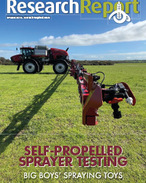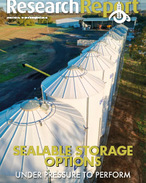This article is 8 years old. Images might not display.
Dr Preston said most herbicides have an optimal temperature range at which they are most effective in controlling target weeds.
"Applying herbicides outside this temperature range is likely to contribute to a spray failure, even in susceptible populations," Dr Preston said.
"Alternatively, applying herbicides within the correct temperature range can improve the control in populations known to have a level of resistance to that herbicide," he said.
The weed management expert said the effect of frost on the herbicide clethodim is a striking example.
"Spraying clethodim in non-frosty conditions achieves vastly better results than spraying after three days of frost, even on populations that are resistant to this chemical mode of action," he said.
"Combining the optimal temperature with optimal weed size will give the best results possible.
"The current common practice of applying clethodim to tillered ryegrass in the coldest months is not making the best use of this herbicide."
According to Dr Preston, as a general rule of thumb, Group A (fops), paraquat (Group L) and glyphosate (Group M) are more effective at lower temperatures while Group A (dims), atrazine (Group C) and glufosinate (Group N) are more effective at higher temperatures.
However, weeds that are resistant to paraquat become less resistant in warmer temperatures.
"The other implication of this research is the effect of ambient temperature on herbicide test results," Dr Preston said.
"Seed collected in winter and grown out in the glasshouse in summer will be tested for resistance in conditions that are not representative of field conditions when growers are next treating that weed species.
"The Quick-Test using whole plants overcomes this problem and improves the reliability of herbicide weakness testing."























